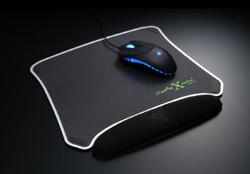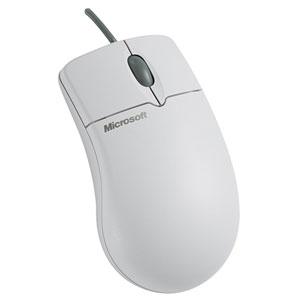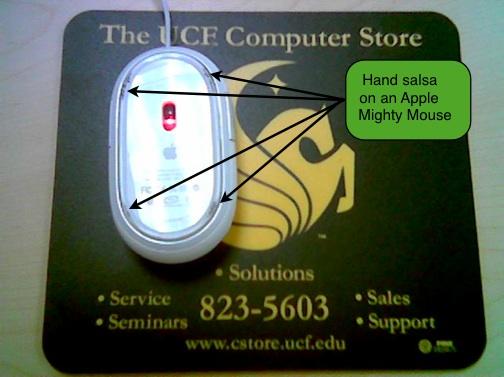|
Choosing a Mousepad
 |
Texture:
Pad surface texture is also important to how a mousepad feels, and how it interacts with your mouse's feet. A small but significant number of manufacturers are offering their pads in rough and smooth coverings, while others offer double-sided mousepads (Razer most notably). Again, flexibility is nice - if you don't know what you want, try to pick up a double-sided mousepad so you have room to experiment. It may be cheaper to get one of these than two single-sided pads, and it's probably easier to carry. If you know you like your mouse cranked up to crazy twitch levels, you're a prime target for a heavily textured pad - this will give you better control, better aim, and will prevent overshooting. Plus, it will help even out mouse movement due to Brownian motion. If you can play fine with an 800-DPI MS Intellimouse and the sensitivity at rock bottom, you're probably looking for a large smooth pad (or a mouse with really big PTFE feet) that will let you whip around with all the speed and nimbleness of your high-sensitivity brethren - and none of the twitchy jumpiness.

The last couple big things, I have noticed, tend to go hand in hand - build quality, and stability. When looking for build quality, we don't just want something that looks good so we can brag - okay, that's kind of a lie, we do want it to look good - but we want something that won't fall apart at least until the next great thing comes along, and we probably want to either swap our old pad for something or give it to a buddy who can't afford the bleeding edge. This usually leads to lower overall costs too - since you don't replace your gear several times a generation. Stability is one of the first things that gets skimped on, hence the link between the two. Nobody wants to lose traction in the heat of battle, and while falling off your mousepad is bad, your mousepad falling off the table is infinitely worse - your loss of confidence in your gear is one of the understated side effects, throwing off your rhythm and leaving you to fix your gear one-handed while hoping you don't respawn too soon. It also causes little subtle errors that not only can't really be compensated for, and learning how to play with a slipping mousepad will make games not fun - simple as that, and nobody's paying you to play (we hope).

Conclusion:
Now, last but maybe least, a bonus issue, and a new word to learn - hand salsa! This is the grime that can accumulate on your input devices if you don't clean them regularly, and some mousepads are magnets for the stuff. (X-Ray, I'm looking at you) I've known people to ditch fairly expensive mousepads due to the inescapable buildup of not easily cleanable cruft, and here's the rub - there's no really good way I've found to know if a pad is going to be a sponge for hand salsa. Soft pads are worse, but the real benefit of hard pads is that it's much easier to wipe down a slab of texturized plastic than machine-wash a piece of neoprene to which specially knitted microfiber cloth has been tenuously glued. This leaves me with a slight personal preference for hard pads, but your milage may - and probably will - vary. I hope that you don't simply hop on Pricegrabber and grab one of the pads I mentioned here - there are better, less expensive pads out now, and I haven't tried everything. I hope that I've taught you some of the questions you can ask in order to find out what works for you. This is critical, so I will repeat it - what works for you. Remember you'll play best on what you find comfortable, try everything you get a chance to, and decide for yourself what's worth your money.
Real Time Pricing:




